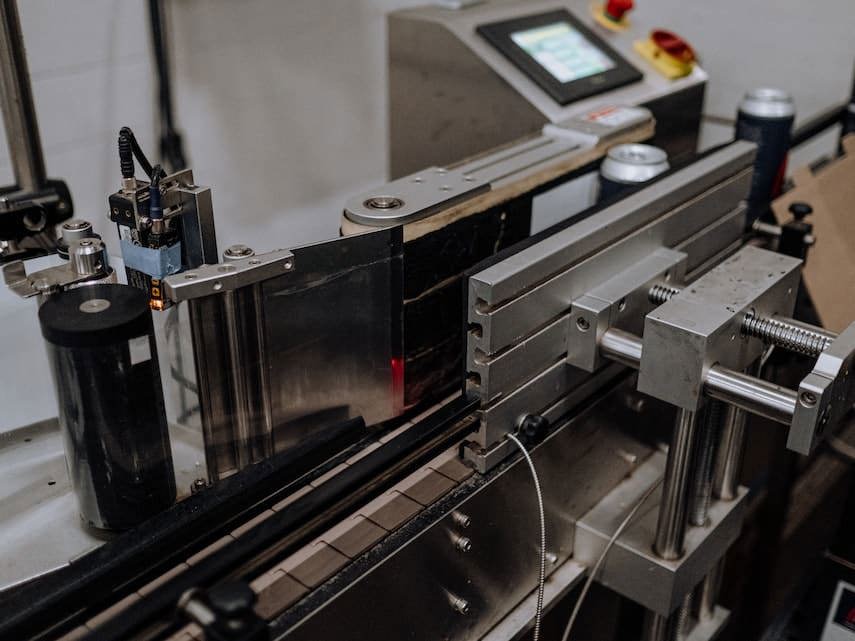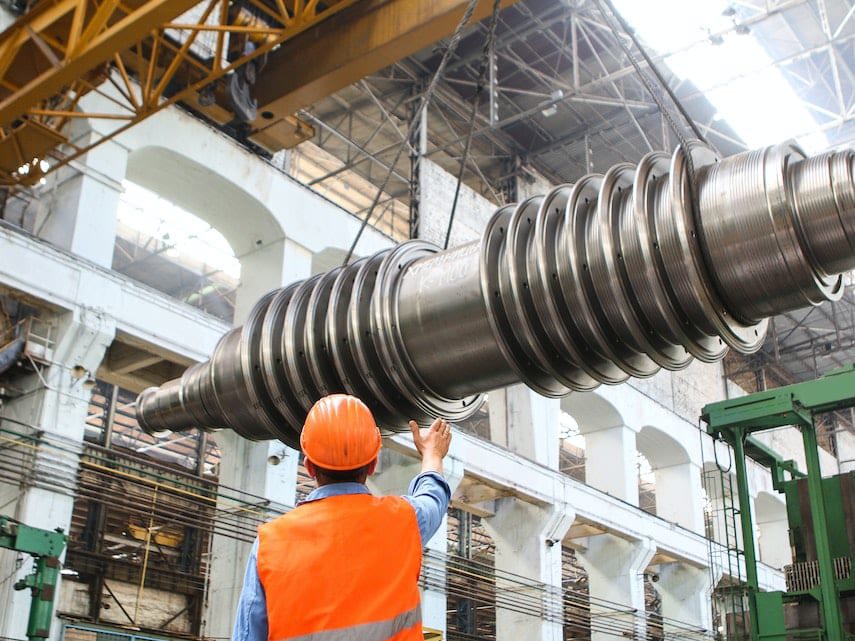
Many modern businesses now rely on automation in manufacturing to get products built faster, optimise workplace processes, and get orders to customers more efficiently. But as there are hundreds of technologies you can invest in at vastly different price points, decisions on investments can be difficult.
Let’s take a look at some of the manufacturing automation options available, their benefits, and current trends to consider.
What is automation in manufacturing?
Automation in manufacturing refers to using technology and machines to perform specific tasks without the need for humans to intervene. The goal of automation is to increase efficiency, productivity, and accuracy in the production process, reducing manual labour and minimizing the risk of human error.
Recent supply chain disruptions and a squeeze on labour markets means automation has now become more important than ever.
According to the International Federation of Robotics, there are around 3.5 million industrial robots in operation around the globe. The Federation noted this represents a growth rate of more than 30% year-on-year, with a massive surge in demand since the pandemic.
How does automation in manufacturing work?
Automation in manufacturing is achieved by using programmable devices, systems, and tools such as artificial intelligence, robots, and computer-controlled machines. Automation is most frequently used to automate repetitive or dangerous tasks, which frees up human labour to focus on more highly skilled tasks.
While there are clear benefits for automated systems, you should figure out the growth and savings potential they will offer before investing in the technology.
 Robotic devices such as the above are a popular form of automation in manufacturing businesses.
Robotic devices such as the above are a popular form of automation in manufacturing businesses.
5 benefits of using automation in a manufacturing business
Automation, though requiring an upfront investment, is typically designed to make your work life easier.
Here are a few of the key benefits of using automation in manufacturing:
- Increased efficiency. This is a central reason to introduce automation into your business. Using machines, robots, or automated processes for certain tasks means they are completed at greater speed and with more precision than can be done by humans. This reduces manufacturing and production time, while also allowing the labour force to complete more complex tasks.
- Increased quality. Automating tasks generally means higher quality control. If the automation is introduced for the right tasks, most (if not all) errors can be eliminated. This increases quality output, and for a lower cost. Ultimately, it means a business is able to offer customers a better, more affordable product produced at greater speed.
- Cost savings. The introduction of automation, as outlined above, saves labour costs, reduces waste and increases efficiencies. Generally, introducing automation machines or tools should decrease costs and ultimately deliver greater profits to the business.
- Increased safety. Introducing automation to certain tasks should increase safety, particularly if used for dangerous or high-risk tasks. For example, using an overhead crane to move a heavy object minimises the risk of back injury caused by humans carrying it across the factory instead.
- Improved ability to gather and analyse data. Tasks done by humans generally require more manual collation of information, which can be time-consuming and prone to error. Automating tasks means data is more easily collected and can be analysed for future improvements.
When it comes to automation in manufacturing, the key is to understand which options best suit your business – and at what point it’s appropriate to invest in automation tools and software.
The different types of automation in manufacturing
There are numerous ways you can automate your manual processes. However, not every automation method is right for every business. Let’s look at a few examples of automation tools used in manufacturing.
Computer-Integrated Manufacturing (CIM)
CIM automation is when the manufacturing process is entirely run by automated systems. This will likely include various types of automation including computer-aided engineering, enterprise management systems, robots, and automated integrations.
Under CIM, the product is prototyped and manufactured through automated systems with a robotic production line. Quality control, storage, data management, and distribution are also automated.
 Computer-integrated manufacturing automation allows a business to rely entirely on mechanical systems for production.
Computer-integrated manufacturing automation allows a business to rely entirely on mechanical systems for production.
Industrial Internet of Things (IIoT)
IIoT automation refers to manufacturing or production in which various devices and smart machines use artificial intelligence (AI) to connect through sensors and ‘talk’ to each other. This enables data and information to be shared in real-time and improves the processes and output of the product.
A similar process is called ‘Intelligent Automation,’ which uses AI to integrate machine-learning algorithms into the manufacturing process to communicate in real-time and improve precision and outputs.
Fixed Automation or Hard Automation
Fixed/Hard automation refers to machinery which is used for particular tasks, such as repetitive actions on a production line. The machines are pre-programmed to perform the tasks with precision and consistency.
Robotic automation is a similar method, where robots are used for production line requirements such as packaging or painting.
Programmable Automation
Programmable automation refers to the use of higher-level programmable systems such as Programmable Logic Controllers (PLCs) to control machine and device tasks and operations.
It is used to produce batch quantities ranging anywhere from a few to a few thousand units at one time. The equipment must then be reprogrammed and adapted to accommodate each new product style.
Flexible Automation
Flexible automation allows for changes to demands that require refinements to the manufacturing systems. This method utilises machines which are controlled by computer systems and operated manually to allow for changes to be introduced.
Examples of automation in manufacturing
Automation in manufacturing comes in a variety of shapes and sizes, from quickening ordinary processes to a complete overhaul of your logistical systems.
Below are some examples of common ways automation can be used in manufacturing.
Use of robots
There are more than three million industrial robots on factory floors around the world. They are pre-programmed to carry out repetitive or tedious tasks that would be prone to error if carried out by humans.
Manufacturing tasks that can be performed by robots include:
- Stacking
- Painting
- Welding
- Polishing
- Labelling
- Assembly
The use of robots decreases the cost of production and increases the precision and speed of output.
Major companies that use robots on their factory floors include Tesla, which uses industrial arm robots for its production line among others uses, and Amazon, which leans on robots for inventory management and other requirements.
 Robots can aid in manufacturing by automating your manual factory processes such as stacking, labelling, and assembly.
Robots can aid in manufacturing by automating your manual factory processes such as stacking, labelling, and assembly.
3D printing
This refers to printing various production parts with a 3D printing machine, which follows a computer design to print certain materials such as plastic in thin layers until the design has been recreated in physical form.
3D printing negates the need for traditional manufacturing processes to be used to create or order that particular part. Companies that use 3D printing on their factory floors include Volkswagen, L’Oreal, and Aldi.
CNC Machining
CNC machines are those which use computer software to direct and control certain automated processes that may be more complex than those handled by robots.
This type of automation is used in industries like aerospace, due to its high levels of precision and rapid production abilities.
Inventory management automation for manufacturers
Inventory management automation refers to machines and software systems which manage and control inventory in your various storage facilities. In some cases, they can track parts or products along the entire supply chain.
Benefits of inventory management automation in manufacturing
Inventory management is one of the many ways automation can be used by manufacturers to create products with more accuracy, at greater speed and at a lower cost.
It also enables the automation of data and tracking which greatly improves the efficiency of the manufacturer and ensures inventory is maintained at the right level, with a low risk of over- or under-stocking of goods.
Amazon – the world’s biggest e-commerce platform – leans heavily on automation for its inventory management. Amazon uses automation tools to lift and move packages and shift products through its facilities. Its use of automation is regarded as a major reason for its success in its speed of delivery, which has contributed to its rise as an e-commerce juggernaut.
Inventory management software
The right software is vital to the success of automated systems. Software such as Unleashed’s cloud-based system automates many of the processes involved in inventory management, such as data entry and reporting.
It offers transparency over what products are available, what needs to be ordered from suppliers, and what lines may be moving faster or slower than others.
Inventory delivery tracking
Automated inventory systems support tracking and delivery, ensuring products are received from the supplier and sent to the customer in good time and as expected.
Tracking systems provide real-time data on the progress of the product, allowing the manufacturer to communicate with the supplier or customer about any delays or issues if required.
Knowing what has left the warehouse and when also enables the manufacturer to order more products from suppliers at the right time and maintain appropriate inventory levels.
Forecasting and demand planning
Automated systems are able to draw on datasets and demand patterns to support forecasting and demand planning. Using automated forecasting systems enables the manufacturer to accurately plan the supply chain demands, inventory stocking, and delivery to the customer.
 Inventory management automation can help your manufacturing business operate at its optimal efficiency level and reduce human errors.
Inventory management automation can help your manufacturing business operate at its optimal efficiency level and reduce human errors.
Big trends for manufacturing automation in 2023
Manufacturing is set to expand in 2023, despite recent headwinds such as the COVID pandemic and resulting supply chain hiccups, labour shortages, rising inflation and costs.
According to Deloitte’s 2023 Manufacturing Report, the industry’s strength will continue, with several trends coming to the fore, including the increase in technology, along with the use of artificial intelligence and ‘smart’ tools. Here are the trends we can expect to see.
Increased connectivity
The arrival of 5G means greater reach, increased connectivity and download speeds. This is set to have a huge flow-on effect for all businesses, including manufacturing.
According to Accenture, 5G will add up to US$1.5 trillion to the U.S. GDP. The gains will come in vastly improved productivity across all industries, including manufacturing.
The Accenture report indicates that 5G-enabled factories will see productivity improvements up to 30%, including 50% improvements in assembly time and 90% improvements in defect detection. The sector will also benefit from increased demand for more 5G-enabled devices and machinery.
The Industrial Internet of Things
The rise of IIoT is expected to be a huge trend for the year ahead. IIoT increases productivity severalfold, by connecting various ‘smart’ devices through advanced sensors, automating and streamlining the manufacturing process.
It should be noted the rise of the IIoT and robotics requires significant network bandwidth and as such may be reliant on connectivity capacity.
Artificial Intelligence
The increase in AI is expected to have a massive impact on the manufacturing sector. Deloitte’s survey on its adoption in manufacturing shows that 93% of companies believe AI will be a “pivotal technology to drive growth and innovation”.
AI can be used in multiple ways, across business operations, supply chain decisions and production lines. AI applications are currently focused on smart production but it’s likely to shift toward products, services, and supply chain management over the next few years.
Upskilled labour
The rapid increase in technology means labour needs to be upskilled in new areas, and away from traditional skills which may now be handled by automation tools.
The need for manual labour is now in specialised areas such as Augmented Reality (AR) and Virtual Reality (VR) technology. These can assist, for example, in understanding manufacturing products which may ultimately end up in dangerous or inaccessible locations such as space stations.
The ability to understand, build and utilise Digital Twins will also be an increasingly in-demand skill. A Digital Twin is a digital replica of a real-world process and can be used to understand and improve production lines and outputs.
